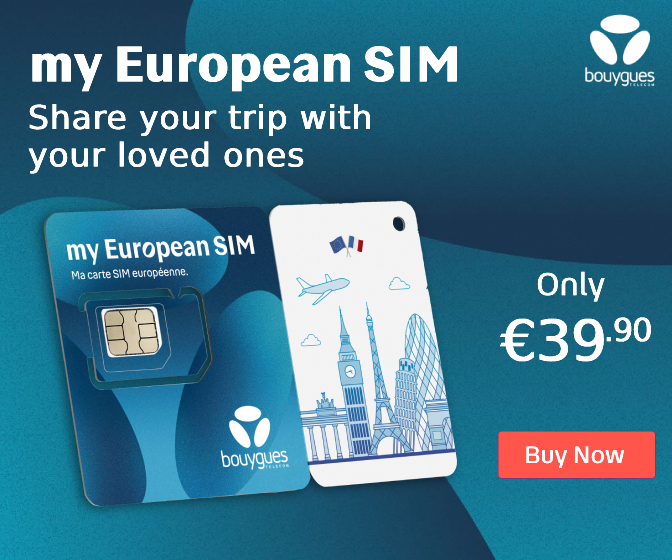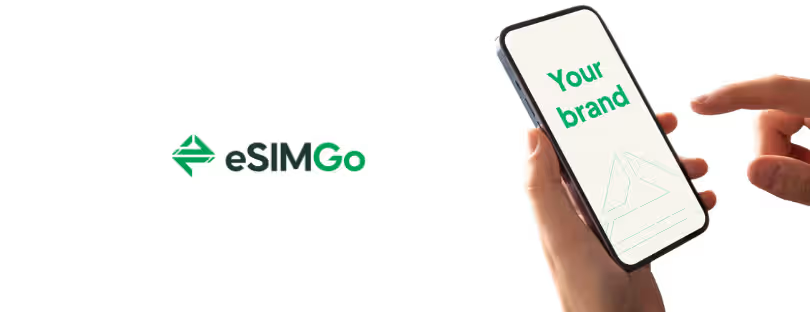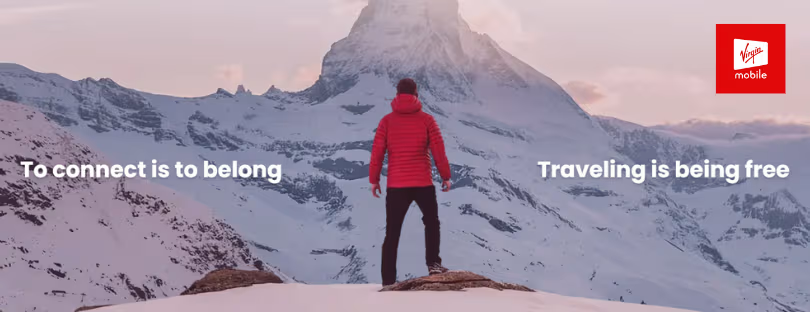
eSIM Travel Surges: 440% Growth Predicted in 5 Years
A new study from Juniper Research, the foremost expert in telecommunications markets, found that the global number of travel eSIM users will grow from 40 million in 2024 to over 215 million by 2028.
Travel eSIMs provide an alternative to operators’ roaming services; allowing travellers to download a temporary local profile onto their device and avoid roaming charges. Whilst a traditional SIM is a physical card that is inserted or removed from a device, an eSIM is a SIM that is embedded in a device and consists of software installed onto a eUICC (Embedded Universal Integrated Circuit Card) chip that is permanently attached to the device.
Overview of the Market
Juniper Research has forecast that the travel SIM and eSIM market will grow from $1.7 billion in 2024, to more than $8.7 billion by 2028. One of the factors that will contribute to the growth of the travel SIMs and eSIMs market will be the rise in the number of international travellers. Juniper Research has forecast that the number of international travellers will grow from 1.3 billion in 2024 to 1.6 billion in 2028.
Moreover, increased familiarity with travel eSIMs will be a key factor driving this market. Currently, the use of travel SIMs can be inconvenient to the consumer, since they have to physically swap SIM cards, meaning that they will not be able to receive
calls and texts from their normal number, and there is the risk of damage or loss to the SIM card. Whereas travel eSIMs are more convenient, as it is more seamless for a customer to download and activate an eSIM, rather than having to physically swap a SIM. Travel SIM and eSIM vendors must look to maximise the awareness of travel eSIMs in particular, as these are more convenient for consumers. To do this, they must partner with OTAs (Online Travel Agencies) and airlines to increase the reach of the product. Another way to do this will be through partnerships with travel influencers.
High roaming costs will also be a key factor driving the growth of this market.
Consumers will look for alternatives to stay connected whilst travelling, so they do not get caught out with high roaming charges. Travel SIM and eSIM vendors must remain competitive with roaming services, as this is the key selling point for consumers. To ensure they offer the most competitive price, vendors must partner with more than one operator in each country.
Travel SIMs
A SIM card is an integrated circuit that securely stores the IMSI (International Mobile Subscriber Identity) number and identifies and authenticates a subscriber on a mobile device. SIMs allow the user to make calls, send SMS messages and connect to
mobile Internet, and can also store the user’s information, including messages, emails, and contacts.
SIM cards come in different sizes, including standard, micro, and nano sizes. Most operators offer a multi-SIM, due to different devices requiring different-sized SIM cards. SIM cards are not unique to smartphones and are also used in laptops,
tablets, and smartwatches. SIM cards also have a unique MSISDN (Mobile Subscriber Integrated Services Digital Network Number), which is the user’s mobile number.
Mobile operators provide unique SIM cards to subscribers, and these are non-programmable OTA (Over-the-Air). The UICC (Universal Integrated Circuit Card) is the hardware used in mobile devices that contains SIM applications and enables
secure access to a mobile network. SIM cards must be changed for a user to switch mobile operators.
Travel SIMs are SIM cards that a user can insert into a compatible device when travelling to provide mobile connectivity abroad. Travel SIM vendors offer consumers a range of solutions to stay connected in different countries and regions, with different amounts of data, calls and text allowances.
KnowRoaming offered an alternative to a travel SIM, which was a SIM sticker. The SIM sticker attached to the customer’s current SIM card and effectively turned it into an international SIM card. The solution was targeted at frequent travellers and remains dormant when the user is in their home country. The SIM sticker was designed for one-time application to a SIM card and no longer worked when removed from the SIM card.
Juniper Research anticipates that as the penetration of eSIM-compatible devices increases, the demand for travel SIMs by consumers in many countries will decrease as customers opt for travel eSIM packages instead. Juniper Research has forecast that the number of travel SIM packages acquired will start to decline between 2026 and 2028.
However, in countries where a significant increase in the number of eSIM-compatible devices is expected by 2028, a decline in the number of travel SIM users is also anticipated. The revenue from travel SIMs is therefore expected to decline, particularly as consumers become more familiar with eSIM technology.
Travel eSIMs
As an alternative to travel SIMs, mobile subscribers can purchase a travel eSIM, which is a form of SIM card that is soldered into a device and allows mobile subscribers to download and manage a profile without having to change the SIM. Therefore, an
eSIM enables the storage and remote management of multiple MNO profiles, which is known as remote SIM provisioning. For travelling, eSIMs can be more convenient than physical SIM cards, as they make it easier to switch between networks without
changing SIM cards. It is also more secure, as eSIMs are soldered directly into the device.
Juniper Research defines a travel eSIM as: ‘An eSIM is a type of SIM card that is embedded directly into a device. Travel eSIMs can offer travellers data, calls and SMS, and are a cost-effective way to stay connected whilst abroad.‘ The technical name for an eSIM is the MFF2 (Machine-to-Machine Form Factor). The MMF2 SIM card was introduced in 2016 as a standard for eSIMs.
There has been an increase in the number of eSIM-compatible devices, as all new iPhones since the XS, as well as Samsung phones since the S20, have the option of using an eSIM as a dual SIM, as well as recent tablets and smartwatches. Moreover, in the US, the iPhone 14 and 15 devices are eSIM-only.
The total number of eSIM-compatible smartphone devices that have been launched reached 109 in June 2023. Xiaomi, Vivo, and Nokia (HMD Global) launched their first eSIM-compatible devices in 2022, and Honor and TCL Communications launched their first eSIM models during the first half of 2023.
In a device that has both a SIM and a travel eSIM activated, the primary card can still be used for making calls and texts while the eSIM can be used for Internet. However, it is essential that data roaming is switched off for the primary mobile plan to ensure that the user does not incur roaming charges.
An increase in eSIM-compatible devices will drive an increase in the number of travel eSIM packages purchased by consumers. This will be due to the increased convenience of travel eSIMs over SIMs, as they do not require physically swapping a SIM card.
The US is the first country to have eSIM-only iPhone devices, with the iPhone 14 and iPhone 15 being eSIM-only. The penetration of iOS devices in the US is also high, and therefore, as consumers replace their handsets, the number of users with eSIM-only devices will grow. This will result in consumers being more familiar with eSIM technology. They will therefore have greater awareness of travel eSIMs and be more confident using them. It is expected that future iPhone devices will be launched as eSIM-only devices in other countries, which will further increase awareness of the technology. This will help drive growth in the number of travel eSIM users over the next five years.
 eSIM Elements
eSIM Elements
The main elements of a consumer eSIM include the SM-DP+ (Subscription Management-Data Preparation), LPA (local profile assistants), eUICC (Embedded UICC), and SM-DS (Subscription Management – Discovery Server). The eUICC is an UICC embedded in the device at the manufacturing stage. The eUICC is a secure element that can host multiple profiles, where each profile allows the eUICC to function like a traditional SIM card. To support multiple profiles, it requires a minimum memory of 512 KB.
Each profile has the operator data that relates to the subscription, which includes operator credentials and operator or third-party SIM-based applications. The SM-DP+ is responsible for profile creation, download, remote management, and protection of operator credentials. The ‘+’ is given to this element as it represents the functions of both the SM-DP and SM-SR of the M2M (Machine-to-Machine) eSIM. The LPA (Local Profile Assistant) is involved in the provision of the capability to download encrypted profiles to the eUICC. It also presents the local management and user interface to the user, for the management of the status of profiles on the eUICC.
The SM-DS (Subscription Management Discovery Services) provides a means to notify LPA when profile data is available to download to the eUICC, where notifications are sent from the SM-DP+ to the SM-DS.
Consumer eSIM Compliance
According to the GSMA, in June 2023, nearly 400 mobile service providers launched commercial eSIM services for smartphones across 116 countries. To offer eSIM capability, an operator must first acquire a SM-DP+ to manage and activate the eSIM profiles.
Moreover, the network element will require certification from the GSMA with the SGP 24 Compliance Process, to ensure that SM-DP+ are compliant with the GSMA’s security requirements.
Compliance with the GSMA Consumer solution specification requires verification of eUICC security, production security and functional compliance.
Benefits of eSIMs
For consumers, travel eSIMs have several benefits over SIMs. One key benefit is that travel eSIMs are more convenient. They do not require the consumer to physically swap SIM cards, which means that the consumer can easily access calls and texts to the mobile number of their home operator.
Another benefit of an eSIM is that, because it is embedded in the device, it is less likely to become damaged or lost. Removal of the physical SIM makes it more likely that it will become lost or damaged. Also, there is a greater security risk if the physical SIM is stolen, whereas, with an eSIM, it is easy to report and block the number if the phone is lost or stolen, so a consumer can avoid misuse.
With eSIMs, there is no limit to the number of profiles that can be stored on the eUICC, which is instead dependent on the amount of memory available. It is, therefore, possible to host multiple MNO profiles, which allows mobile subscribers to easily change providers and switch to using a travel eSIM. As eSIMs allow for remote provisioning, this also makes it easy for eSIM users to switch between mobile networks over-the-air, allowing them to easily switch to using a travel eSIM when travelling.
eSIM Distribution Channels
The two ways in which travel eSIM vendors distribute eSIMs are via a mobile app or through a web portal. Through a web portal, consumers will receive a QR (Quick Response) code to scan to download and activate the eSIM they purchased. The QR code contains the address of the Remote SIM Provisioning system, allowing the device to connect to the system and download a SIM profile securely. These QR codes are typically delivered to the customer via email. When the consumer purchases the eSIM via a mobile app, they can download the eSIM directly from the app, without having to scan a QR code.
As travel eSIMs become more popular and the number of travel eSIM vendors offering similar services also increases, vendors must explore new distribution channels to differentiate themselves from their competitors. One way in which awareness for travel eSIMs will increase is from promotion by travel influencers that are partnered with vendors. Vendors may, therefore, create a seamless purchasing experience by allowing customers to purchase and receive a travel eSIM via conversational commerce, in the same app that the travel eSIM is being promoted in.
Vendors should look to deliver the QR code in different rich media messaging channels, including OTT messaging channels and RCS messaging. This will work well in countries where OTT messaging apps are widely adopted, for example, with WhatsApp in Brazil. In the US, where email is less popular as a business channel, delivery of QR codes for travel eSIMs via RCS will be particularly effective. MMS (Multimedia Messaging Service) is already popular in the US, and it is expected that RCS will also be a popular channel for business messages in this country.
Purpose of Data Usage
One key factor that will affect the amount of data that a travel SIM or eSIM user requires is which services they access the Internet for. Travellers use the Internet in different ways when abroad, including for entertainment, navigation, and communication. The amount of time a user spends online while abroad will also impact the amount of data required for the trip.
a) Entertainment
The different types of entertainment that a travel SIM or eSIM user might use data for include streaming films, YouTube, games, and streaming music. The highest proportion of users that stream daily belongs to the 18 to 34 age group at 31%, followed by the 35 to 54 age group at 18%, and the 55 and over age group at 6%.
The number of travel SIM and eSIM users that use data to watch YouTube will differ depending on the age of the user. YouTube uses between 480 and 660 MB per hour at the standard 480p, but this amount can increase to between 5.5 GB and 23 GB if
watching in 4K. Statistics taken from the US suggest that 50.6% of YouTube users are Gen Z or millennials (born between 1981 and 2021), and only 15% are baby boomers (born between 1946-1964).
Therefore, by understanding the age of the consumer, a travel SIM and eSIM vendor will be able to assume whether they are likely to require more or less data, and will be able to better recommend travel SIM or eSIM packages that are more personalised.
Residents in North America spend an average of 140 minutes daily listening to music per user. Whereas, in Europe, users stream music for 99 minutes per day. With Spotify, listening to music will use approximately 43 MB of data per hour. Therefore,
a travel SIMs and eSIM vendor must assume that the residents in North America will need more mobile data if they indicate that they will use the data for music streaming.
b) Navigating
Another way consumers will use data while travelling is to use online maps and find recommendations for restaurants and activities. Google Maps consumes around 40 MB per hour. However, this can differ depending on the location and network speed.
For web browsing to find restaurant and activity recommendations, a consumer will use approximately 15 MB per hour.
c) Communicating
This can include social media, video calls, and messaging. The use of social media will also differ depending on the age of the consumer, where different social media apps are more popular with different age groups. Moreover, the amount of data used by social media depends on the type of content, where the video app TikTok will on average consume much more data compared with Twitter or Facebook.
OTT messaging platforms, such as WhatsApp and Facebook Messenger, are another way that consumers stay connected whilst abroad. Video calling platforms are an additional way that consumers can stay connected whilst abroad. There are different types of video calling platforms, and each uses different amounts of data.
Therefore, how data is used can vary between different age groups, with 18–34-year-olds engaging in mobile activities that consume more data. Data consumption might also differ depending on where the consumer is based, with
certain apps being more popular in some countries than others.















